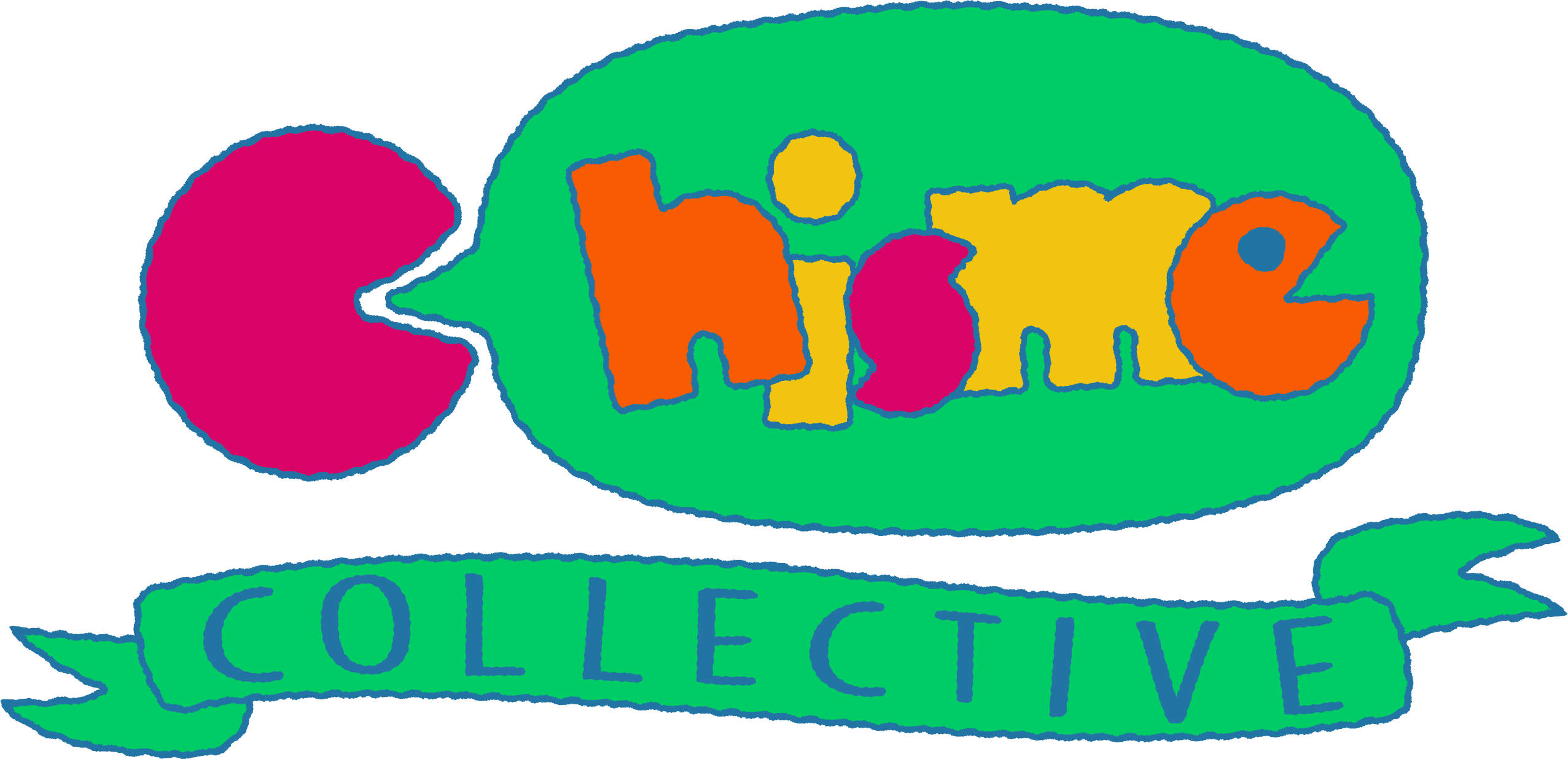Essay: Killing fear with community at Houston immigration protest
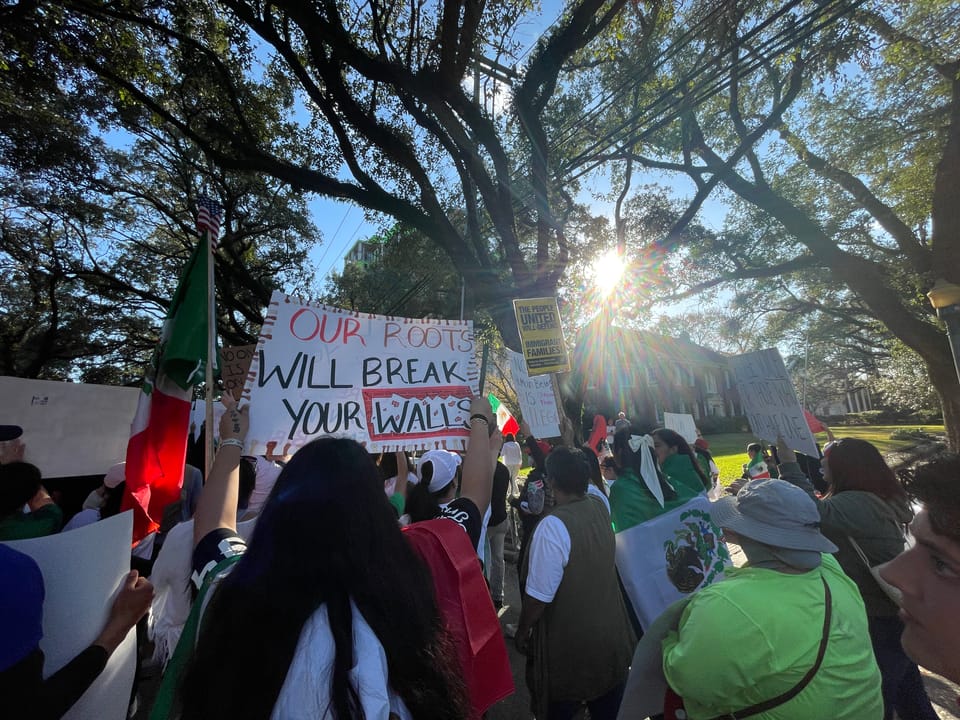
By Julie Garcia
Every morning, my eyes open and there are about eight seconds before the brain focuses – a short window before I remember the new world order and the rollercoaster of 2025 emotions drops from the highest, tallest loop.
Fear, disgust, numbness. And then, fear again.
Since Donald Trump’s second inauguration on Jan. 20, he has signed 49 executive orders, ranging from “Imposing Duties to Address the Situation at Our Southern Border” to “Ending Radical Indoctrination in K-12 Schooling” to “Protecting Children From Chemical and Surgical Mutilation.”
Every headline feels like a razor cut. And it’s not only government news.
Planes keep falling out of the sky; the South experienced a record snow day three weeks ago, and the temperature in Houston has been more than 80 degrees since Feb. 3. Google has dropped its pledge not to use artificial intelligence (AI) to make weapons or conduct surveillance (hello, Skynet).
A week ago, I saw posts about a protest scheduled to start in a Little League field where I used to practice softball. The post was simple:
Houston Protest
Sunday 2/2/2025 @ 3 p.m.
Ervan Chew Park4502 Dunlavy St.
Houston, TX 77006
It included an image of a farmworker and a quote:
“I want you to get an education so that you don’t have to break your back like me.”
In the ’70s, my father Güero worked as a migrant farmworker for the first 10-12 years he lived in the U.S. He has tales from Texas, California, New Jersey, Florida, South Carolina (where he married his first wife and had my brother, Shaun), and Texas again.
On protest day, the February weather was giving late April: highs in the mid-70s and low humidity with a slight breeze. But I felt anxious about going to the protest until I saw my neighbor, Katia, in the backyard.
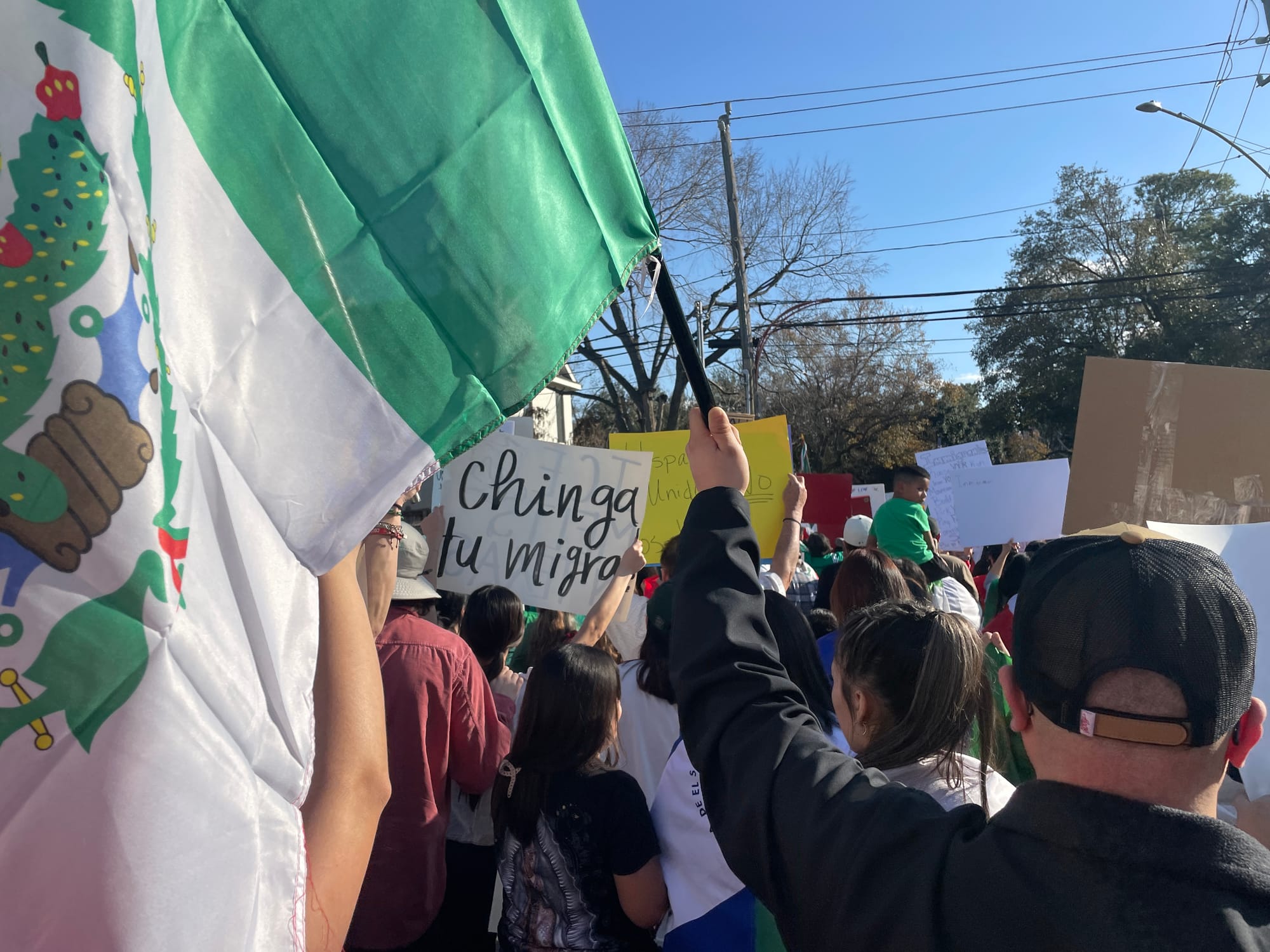

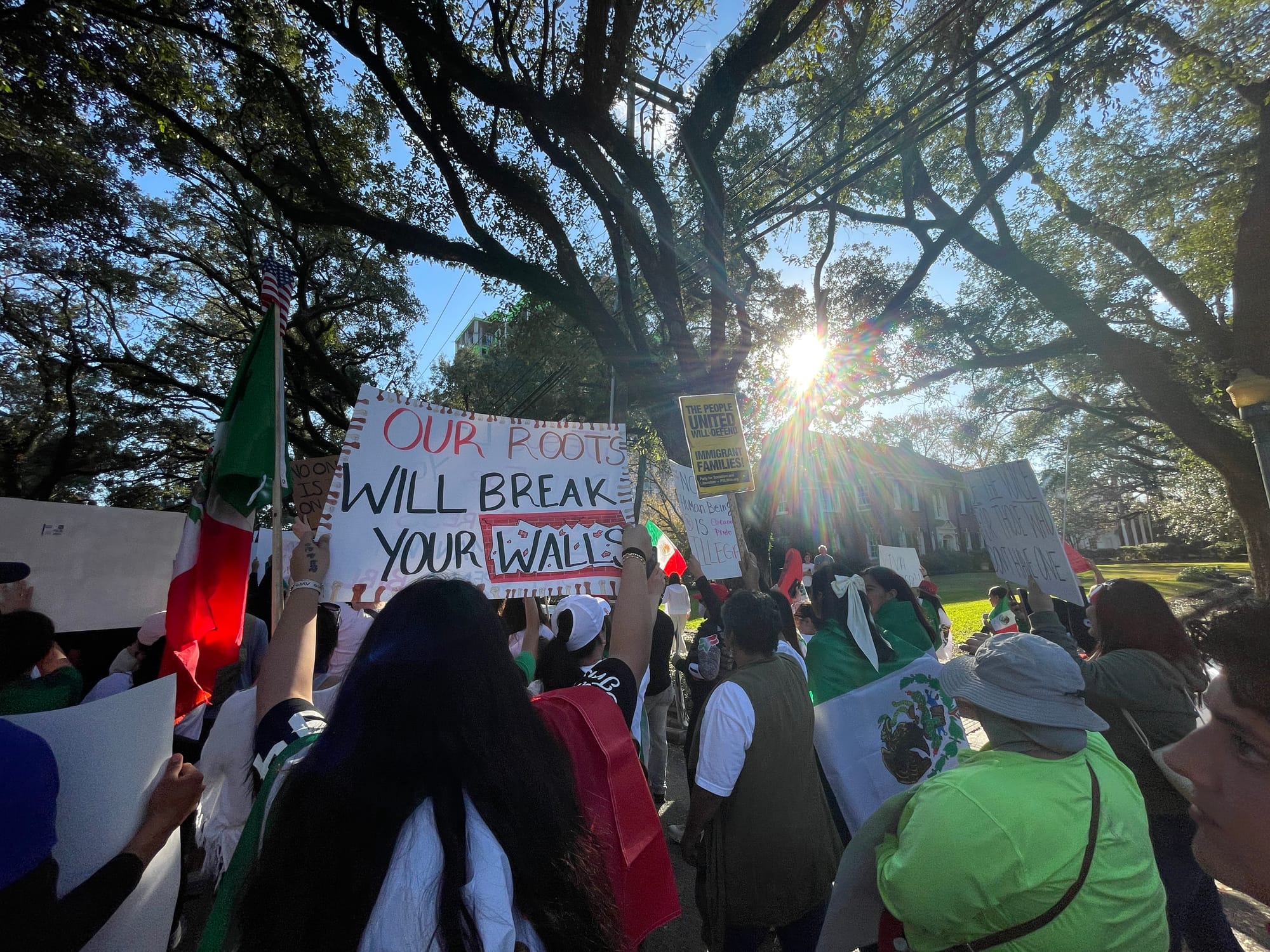
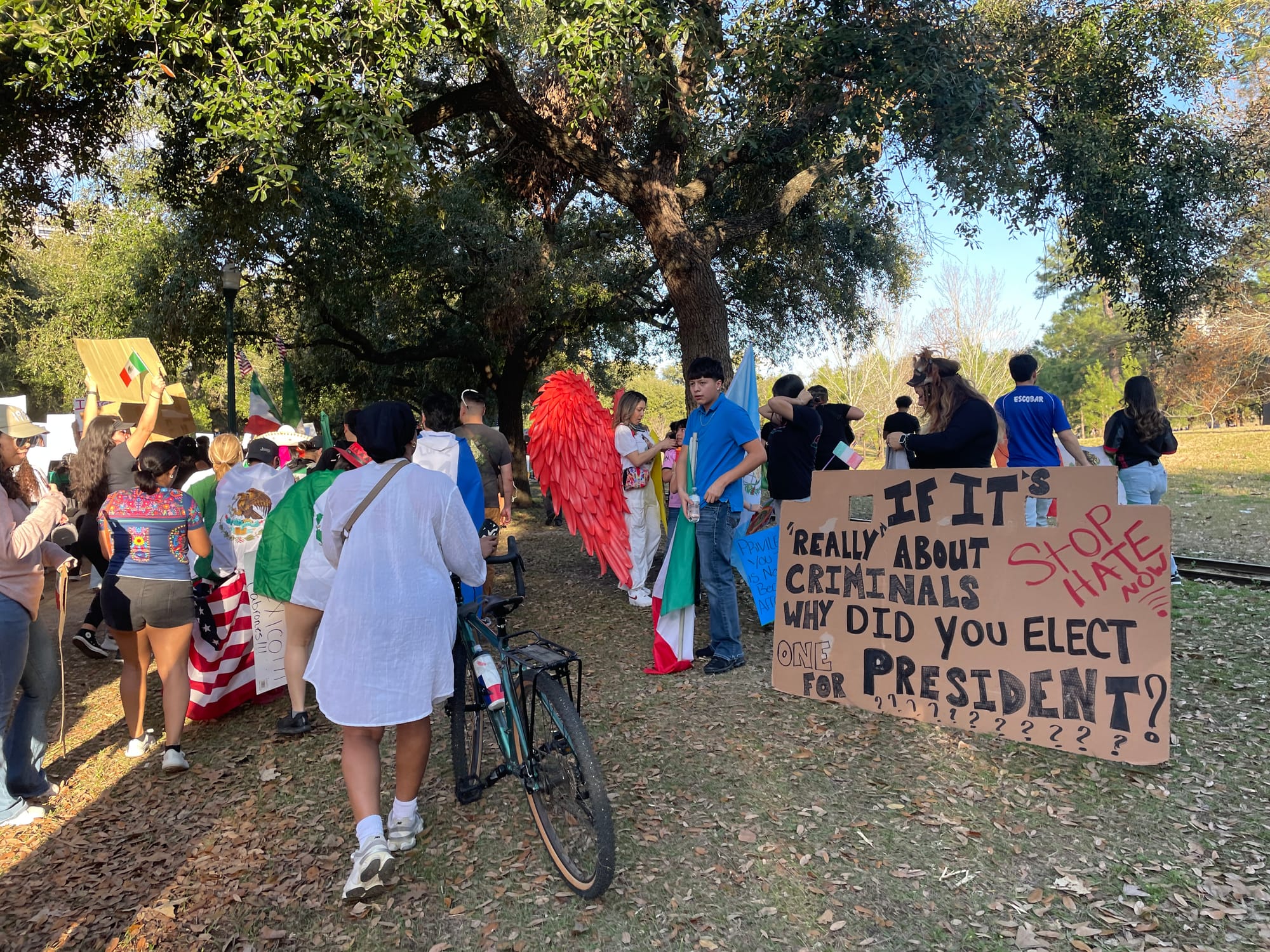


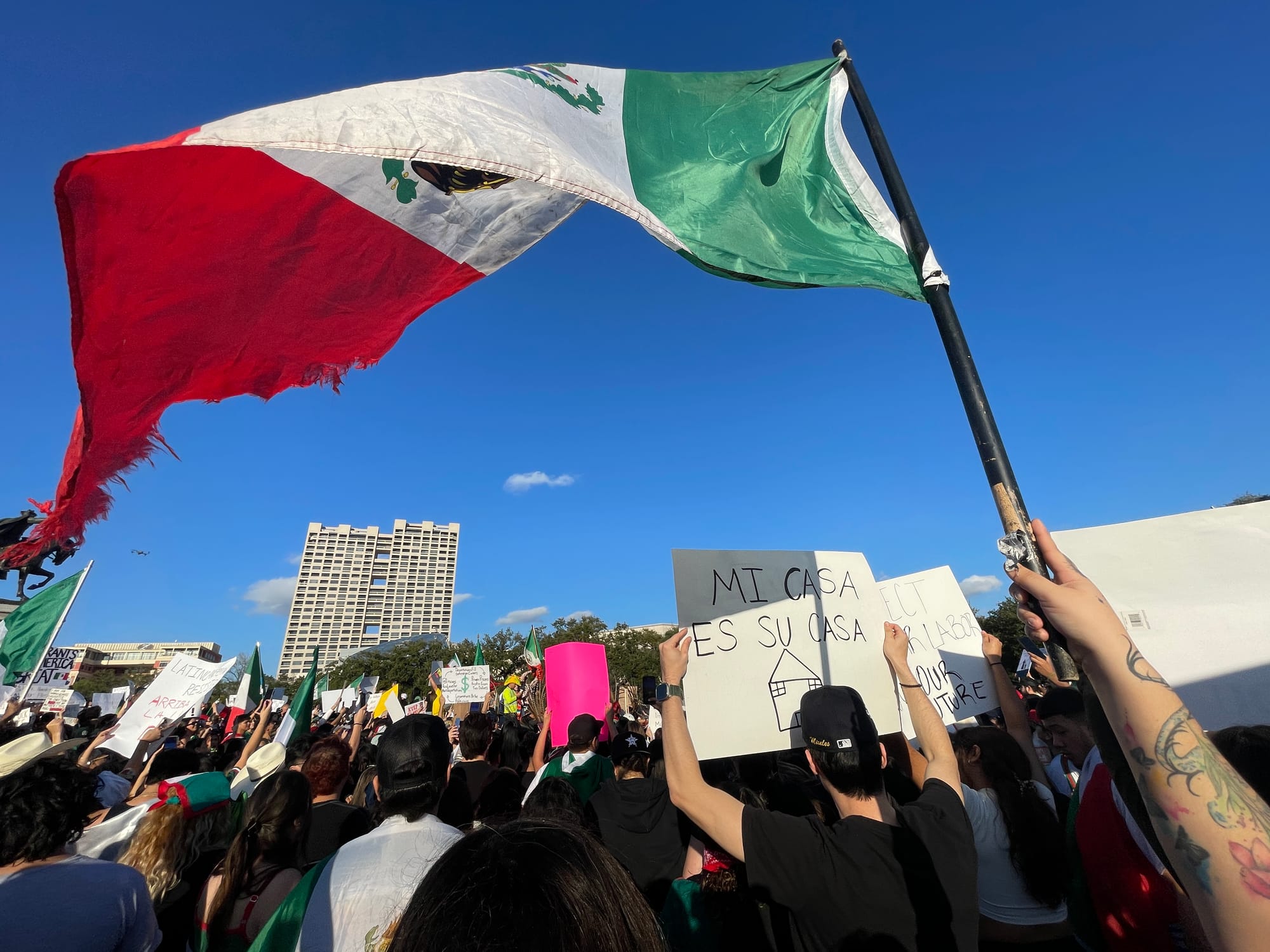
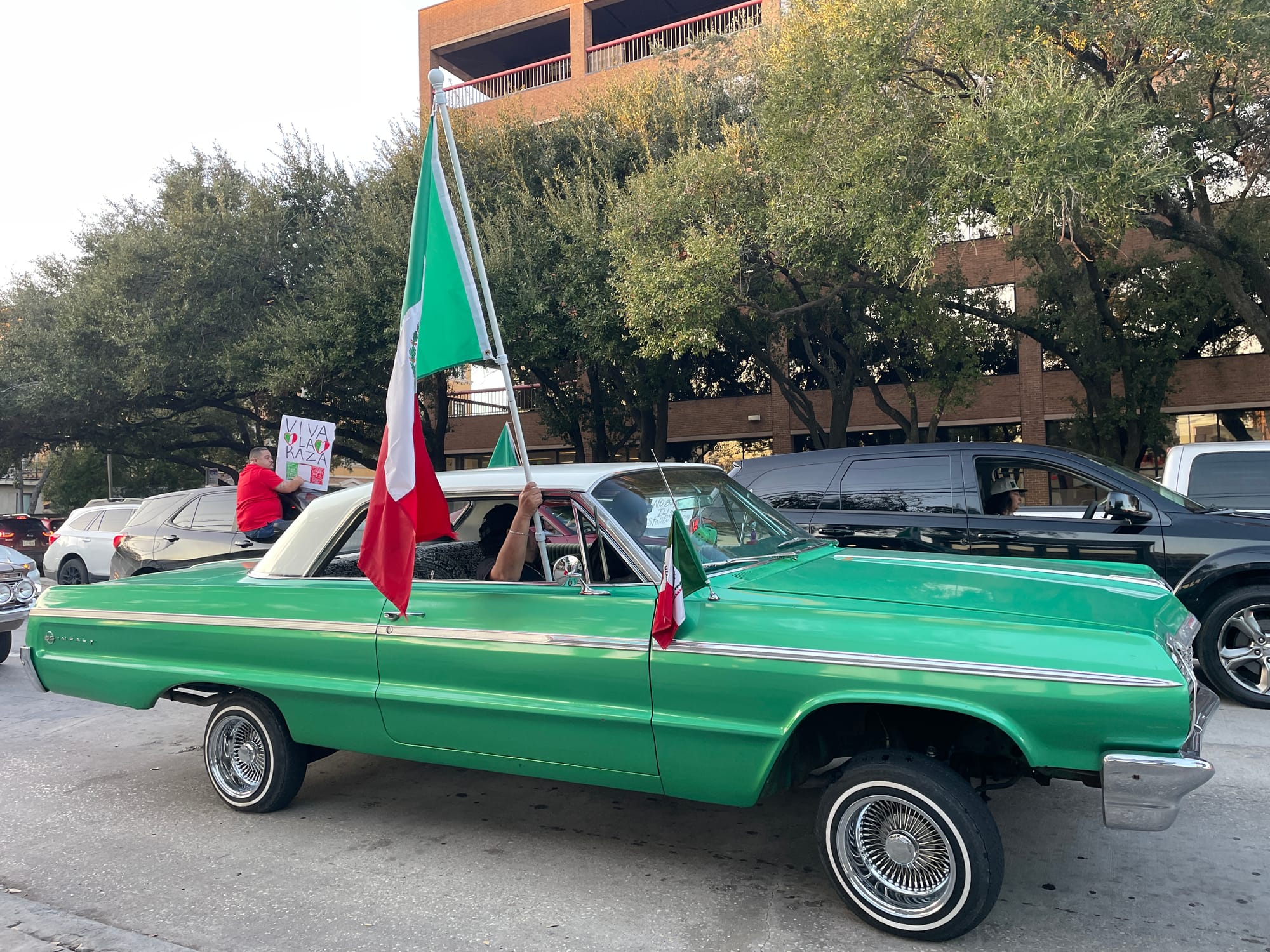
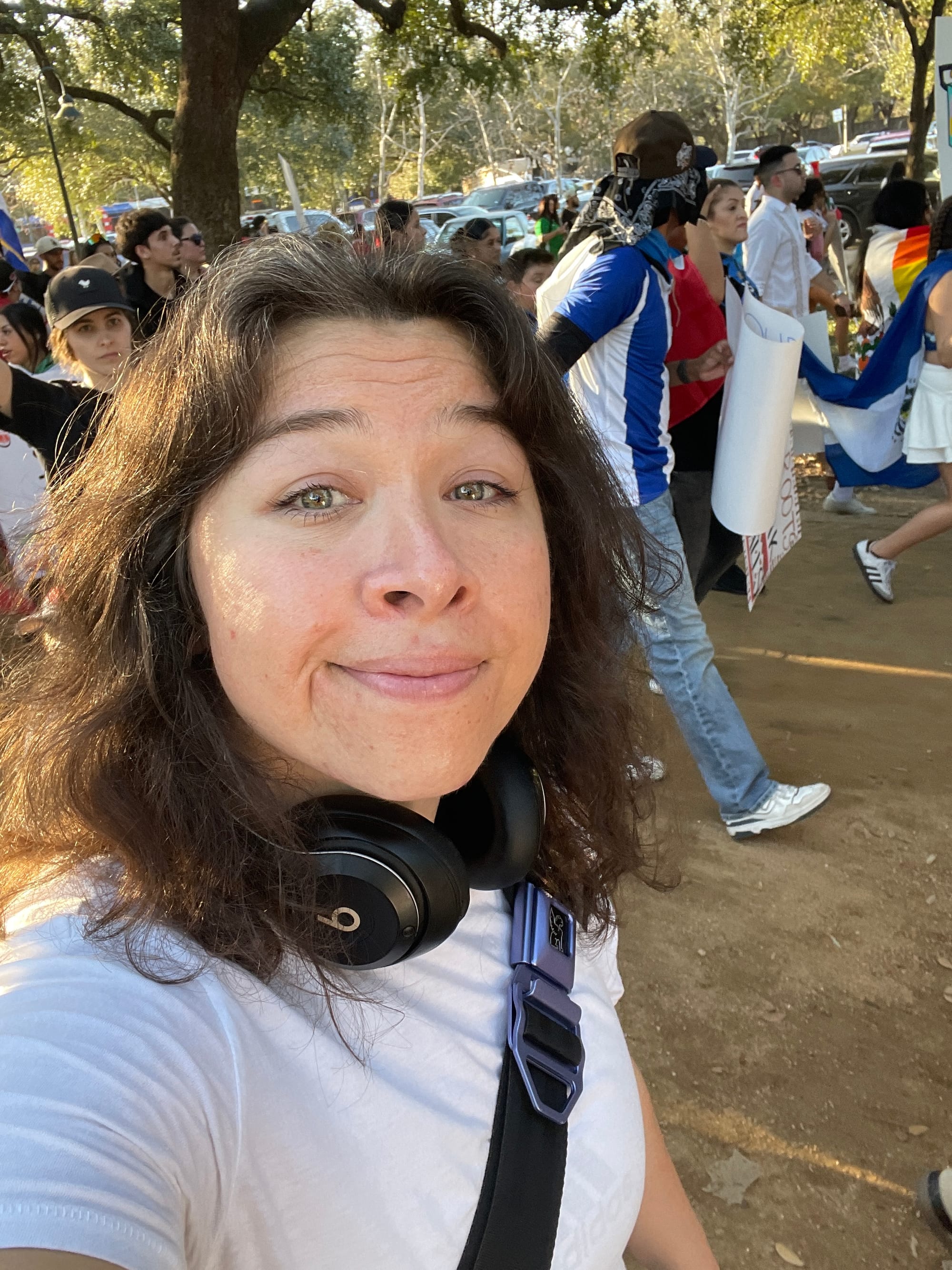
Photos of Houston immigration protest contributed by Julie Garcia
“Hey girl, you going to the protest? I made these signs if you want one,” she asked. “My dad glued on the sticks on the back.” Her homemade signs read “Don’t Bite the Hand that Feeds You.”
I’ve been paid to write since 2007 – that’s 18 years as a working journalist. Before last Sunday, I had never attended a protest as a real person: a taxpayer, the daughter of a Mexican immigrant, a queer Texan with a cat.
Due to newsroom policies on objectivity, reporters typically are not allowed to attend protests unless they are covering it for a story. In 2020, I was not assigned to cover downtown Houston’s George Floyd protests, but I went with another reporter because I firmly believe in the buddy system. One of our friends, another reporter, was taken into custody because Houston police didn’t think he wasn’t easily identifiable as a member of the press.
Seeing Katia’s signs made me feel electric. No longer shackled to a newsroom, I felt empowered to make a stand for the first time in my life.
At 2:30 p.m., I walked to the bus station and hopped on the No. 25 bus. About five stops from my destination, it was obvious that protest traffic had already started; I saw my first Mexican flag in the distance. I exited early and joined the throngs of people on the sidewalk who were headed in the same direction as me.
As we set foot in the park, I see the first “Chinga tu MAGA” sign of the day. Houstonians draped themselves in Mexican, Salvadoran and Venezuelan flags. A woman in a black skirt and green shirt held a sign, “En una tierra robada, nadie es illegal,” translated into English means “No one is illegal on stolen land.”
The march started, and I found a place in the middle of a sea of signs and flags. I joined the chants - “Si, se puede,” “Immigrants Make America Great,” “El Pueblo Unido Jamás Será Vencido.” Some bystanders shot photos and videos with their phones; others joined in our chants or held up a fist in solidarity.
The march ended at the Sam Houston Monument in Hermann Park. Latinos of all origins surrounded the statue and continued to chant, hold signs, sing and dance. A group of Indigenous dancers in full headdress performed, and protesters gave thunderous applause. Cars, trucks and SUVs rolled through the area with flags hung out the windows, swerving and honking – it felt like San Antonio after a Spurs victory.
Though unaware at the time, I was one of about 20,000 people who attended the rally. According to the Houston Chronicle, it was organized by Immigration Youth Texas and FIEL Houston, but I first saw the post on htx4palestinianliberation’s Instagram page.
Surrounded by people, I felt safe, loved and protected for the first time in weeks. On the streets of Houston, away from the shared psychosis that is the current news cycle, I could finally breathe because I saw others put on their oxygen masks.
“Find your community” – a social media expression that comes with zero instructions or guidance. How do we find community? Who can we trust? What if we don’t agree on everything? Can I really be honest with them?
You won’t have the answers to all these questions at once. But your community is out there, and it’s ready for your insight, feelings and ideas about the state of the world. If you don’t have any of those things, your community will give your nervous system a much-needed hug of relief.
Once you see them put on their oxygen mask, you’ll be able to put yours on, too. Then the real work will start.
